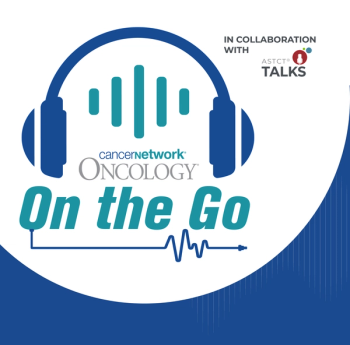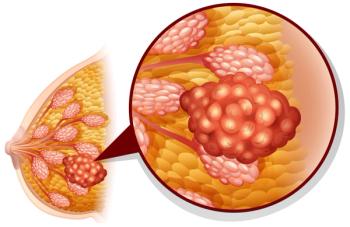
Managing Treatment-Related Neurotoxicity
Understanding treatment-induced neurotoxicity can be difficult when treating patients with central nervous system (CNS) malignancies.
Understanding treatment-induced neurotoxicity can be difficult when treating patients with central nervous system (CNS) malignancies. This was a topic of discussion at the Oncology Nursing Society (ONS) 40th Annual Congress, held April 23-26, in Orlando, Florida.
Using a case-based approach, clinical nurse specialist’s Mary Elizabeth Davis, RN, MSN, AOCNS, and Wayne Quashie, MSN, RN, ACNS-BC, AOCNS, both from the Memorial Sloan Kettering Cancer Center in New York, explained how nurses can effectively manage the signs and symptoms of CNS toxicity and disease.
Surgery, radiation, and/or chemotherapy may cause acute or delayed CNS issues such as necrosis, encephalopathy, intracranial hemorrhage, and myelopathy. Neuropathy-a common symptom associated with chemotherapy-would be considered a peripheral nervous system (PNS) disorder. While all require intervention, treatment options may vary, depending on the extent of the toxicity.
How do you distinguish between toxicity and disease symptomology?
It can be tricky to distinguish tumor recurrence from neurotoxicity. Metabolic imaging and perfusion scans may help decipher between the two. Pathological analysis would be the best way to confirm this, but obtaining another biopsy in a patient with brain cancer can be risky.
Radiation necrosis of the cerebral hemispheres and spinal cord is related to the administration of radiation treatment-especially with higher doses. Patients generally present with cognitive dysfunction, personality changes, increased intracranial pressure (which may result in brain herniation), paresis, and other neurological deficits. While radiation necrosis can be difficult to manage, there are treatment options available:
• Corticosteroid therapy (standard of care)
• Surgery
• Hyperbaric oxygen therapy
• Bevacizumab
It’s important to keep in mind that while steroid use in patients with CNS tumors is the standard, patients can develop what’s commonly referred to as, “steroid psychosis.” Patients receiving high doses of steroids, those with a psychiatric history, blood-brain barrier damage, and cytochrome P450 inhibition are at risk.
Another toxicity to consider is chemotherapy- and radiation-induced neuropathy. Many patients experience peripheral neuropathy from drugs such as bortezomib, vinca alkaloids, taxanes, and platinum-based therapies. Patients typically complain of a numbness and tingling sensation in the extremities, specifically in the fingers, toes, and feet. Autonomic neuropathy can also occur and causes symptoms such as constipation, erectile dysfunction, bladder retention, and orthostatic hypotension.
Radiation patients may experience neuropathic side effects as well. For patients receiving radiation, specifically to the sacral plexus (colorectal cancer, gynecological cancers) or to the brachial plexus (upper airway cancers), are at risk for developing radiating neuropathic pain.
Currently, there are no established agents available to prevent neuropathic toxicity, but there are pharmacological and non-pharmacological treatment options available:
• Duloxetine
• Anticonvulsant drugs (gabapentin, pregabalin)
• Tricyclic antidepressant drugs (nortriptyline, amitriptyline)
• Compounded topical gel containing baclofen, amitriptyline, HCL, and ketamine)
• Refer patients to occupational medicine
• Cognitive and behavioral modifications such as guided imagery for pain control
• Educate patients on safety measures in the home such as water temperature, clutter, and wearing shoes
Lastly, another neurotoxic adverse event that’s referred to as, “chemo brain/chemo fog,” is a form of cognitive dysfunction that healthcare practitioners generally relate to cancer treatment. These patients have difficulty resuming their precancer lifestyle, and it can significantly impact their quality of life. Fatigue, the inability to concentrate and learn new skills, and memory loss are the typical symptoms. Pre-existing conditions and direct neurotoxic effects are associated with chemo brain.
Research studies suggest that cancer patients with undiagnosed, pretreatment cognitive impairment via imaging studies (white and gray matter abnormalities) are at a higher risk of developing chemo brain-especially those receiving high-dose chemotherapy. Pre-existing conditions (existing comorbidities, cognitive dysfunction) are some of the indirect factors contributing to chemo brain. The direct effects from treatment, such as chemical toxicity, inflammatory factors, vascular injury, blood clots, and defects in neural repair, are other possible etiologies.
Nurses need to be diligent about screening cancer patients for chemo brain. Imaging studies and neuropsychological testing should be performed at all patient visits. There are treatment options to also consider for these patients:
• Investigate confounding factors (medications, nutrition, sleep disorders)
• Consider neuropsychiatric evaluation
• Consult occupational therapy
• Administer psychostimulant drugs if necessary (last line of therapy if other interventions have failed)
• Encourage physical activity, but rest periods as well
• Urge patients to limit alcohol or other substances that may alter cognition
• Encourage patients to use memory aids (planners, to-do lists, etc)
Oncology nurses are in a great position to help identify signs and symptoms of neurotoxicity early on. Immediate intervention will maximize the patient’s quality of life, and possibly reduce the need for excessive drug administration.
Newsletter
Stay up to date on recent advances in the multidisciplinary approach to cancer.
































































































